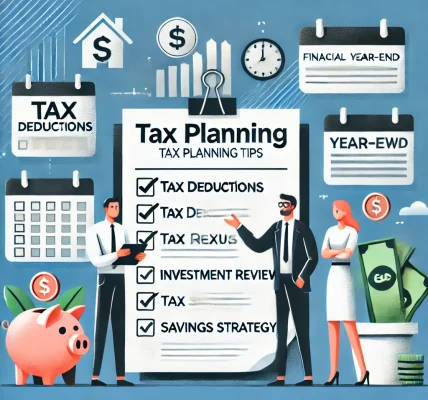Reducing your tax liability is one of the most effective ways to boost your financial health. By implementing smart tax-saving strategies, you can keep more of your hard-earned money while staying compliant with the law. Whether you are an individual taxpayer or a business owner, adopting the right approach can make a significant difference.
Here are the top strategies to help you reduce your tax liability:
1. Leverage Tax Deductions
Tax deductions lower your taxable income, reducing the amount of taxes you owe. Some common deductions include:
- Section 80C: Investments in Public Provident Fund (PPF), Employee Provident Fund (EPF), National Savings Certificate (NSC), and Equity Linked Savings Schemes (ELSS) are eligible for deductions up to ₹1.5 lakh.
- Home Loan Interest: Deduction under Section 24(b) allows you to claim up to ₹2 lakh for interest paid on a home loan.
- Medical Insurance Premiums: Under Section 80D, you can claim deductions for premiums paid for yourself and your family.
2. Invest in Tax-Saving Instruments
Strategic investments can help you save on taxes while growing your wealth. Popular tax-saving instruments include:
- ELSS Funds: Equity-linked saving schemes offer tax benefits and higher returns compared to traditional instruments.
- Tax-Free Bonds: Interest earned from these bonds is tax-exempt.
- National Pension System (NPS): Contributions to NPS qualify for additional deductions under Section 80CCD.
3. Utilize Tax Credits
Tax credits directly reduce your tax liability. Some examples include:
- Education Loan Repayment: Interest on education loans is deductible under Section 80E.
- Renewable Energy Investments: Tax credits are available for installing solar panels or adopting other green energy solutions.
4. Optimize Salary Structure
For salaried individuals, restructuring your salary can help reduce taxable income. Consider the following:
- Include allowances like House Rent Allowance (HRA), Leave Travel Allowance (LTA), and transport reimbursements.
- Opt for meal vouchers or company-provided facilities that are tax-exempt.
5. Plan for Retirement
Contributions to retirement funds offer significant tax benefits. Examples include:
- EPF Contributions: Automatically deducted from your salary and exempt under Section 80C.
- Voluntary Provident Fund (VPF): Offers the same tax benefits as EPF but with higher contributions.
- NPS Contributions: Allows for an additional deduction of up to ₹50,000 under Section 80CCD(1B).
6. Capitalize on Capital Gains Exemptions
Capital gains tax can significantly impact your investments. Minimize it with these steps:
- Reinvest Gains: Invest in specified assets, such as residential property or bonds, under Sections 54 and 54EC to defer or eliminate tax.
- Long-Term Investments: Hold assets like stocks and mutual funds for more than a year to qualify for lower long-term capital gains tax rates.
7. Maintain Proper Records
Documenting your income, expenses, and investments can help you identify and claim all eligible deductions and credits. Use tools or hire a professional to organize and manage your financial records effectively.
8. Seek Professional Advice
Tax laws are complex and change frequently. A tax consultant or financial advisor can help you navigate these changes and identify tailored strategies for reducing your liability.
Common Mistakes to Avoid
- Missing Deadlines: Delayed filings may lead to penalties and lost opportunities to claim deductions.
- Underreporting Income: Ensure all income sources are reported to avoid legal consequences.
- Overlooking Lesser-Known Deductions: Many taxpayers miss out on deductions for expenses like tuition fees, donations, and medical costs.
Conclusion
Reducing your tax liability is not just about saving money; it’s about making smarter financial choices. By leveraging deductions, credits, and strategic investments, you can optimize your tax planning and achieve long-term financial goals. Start implementing these strategies today to take control of your taxes and build a secure financial future.




